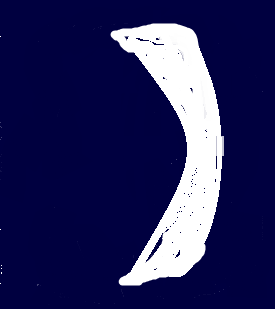This chapter focuses on concepts that are difficult for students grasp because they are not concrete substances with easily measurable properties. An example that the text provides as a concrete measurable substance is matter is matter and one that is not is energy.
In the two science stories in this chapter the teachers, Ms. Stone and Ms. Travis, are using two different teaching approaches. Ms. Stone is teaching her lesson based on a direct instruction teaching approach, whereas Ms. Travis is using an indirect teaching approach and basing her lesson off of inquiry.
Ms. Travis thinks of her students as "knowers". She encourages them to carry our investigations on their own, and relate their topics to everyday life. She expands the science kit by allowing students to use various materials outside of the kit as well as by letting the students engaged.
Ms. Stone is more of an authoritative teacher. She doesn't trust that her students can explore investigations on their own and is not as open to students figuring out the answers one their own.
I thought it was interesting to see the different approaches to teaching; direct instruction and indirect instruction. I also found this picture online that has characteristics on strategy instruction.
Welcome to Teaching Science Together
Welcome to my blog!
Thursday, March 24, 2011
Moon Phases
February 3, 2011 New Moon
February 4, 2011
February 5, 2011
February 6, 2011
February 7, 2011
February 8, 2011
February 9, 2011Waxing Crescent
February 10, 2011
February 11, 2011 First Quarter
February 12, 2011
February 13, 2011
February 14, 2011
February 15, 2011 Waxing Gibbous
February 16, 2011
February 17, 2011 Full Moon!
February 18, 2011
February 19, 2011
February 20, 2011
February 21, 2011
March 1, 2011 Waning Gibbous
March 2, 2011
March 3, 2011 Third Quarter
March 4, 2011
March 5, 2011
March 6, 2011 Waning Crescent
March 7, 2011
March 8, 2011
March 9, 2011 New Moon!
March 10, 2011
March 11, 2011
March 12, 2011
March 13, 2011
March 14, 2011 Waxing Crescent
March 15, 2011
March 16, 2011
March 17, 2011 First Quarter!
March 18, 2011
March 19, 2011
March 20, 2011 Waxing Gibbous!
March 21, 2011
March 22, 2011
March 23, 2011
March 24, 2011 Full Moon!
Sunday, March 13, 2011
Rocket Launch
Over spring break I went down to Florida. While I was there I had the opportunity to observe the Delta IV Rocket launch. It was one of the most amazing things I have ever seen in my life! This rocket which launched on March 11, 2011 from Cape Canaveral in Florida carried a top secret military payload. Although I did research the contents of the rocket, but because it is all top secret I couldn't find much information. Here is what I did find: "The NROL-27 payload supports the national defense and all information about its mission and goals is a classified military secret. Some outside observers say NROL-27 may be a powerful military communications satellite for relay of vital national security data rather than a signals intelligence satellite." (Universetoday.com)
Although the location of Cape Canaveral was very distant from where I was staying, I was still able to clearly see everything that was going on. I saw the cloud of fire and smoke underneath it prior to launch and watched it sail over the ocean and into the sky. Like I said it was amazing! I captured some pictures to share!
Although the location of Cape Canaveral was very distant from where I was staying, I was still able to clearly see everything that was going on. I saw the cloud of fire and smoke underneath it prior to launch and watched it sail over the ocean and into the sky. Like I said it was amazing! I captured some pictures to share!
Tuesday, March 1, 2011
Germination
In class the other day we discussed the process of germination. Although I remembered some things about this topic, I felt that I could learn more. I found this picture which is very clear and helpful in visualizing the process of germination. When teaching this process to your class, it may be helpful to provide them with a visual aid like this one, or you can even have your students prepare their own visual aid of the process as a science station activity.
Just like humans have a life cycle, so do plants. They start as a seed which you plant in soil and when the seed is in the soil it collects nutrients to help it grow. When the seed begins to grow this is the process of germination. The seeds will first sprout a primary root, then the hypocotyl (or the stem) straightens out and the cotyledons (or the seeds) come out from the ground as the stem straightens. The main root enlarges and the side roots come out as well as the leaves. And that is the process of germination. It was so much easier that I had a visual aid to walk me through the process.
There are a few things to keep in mind: a seed's growing condition usually needs to be damp, warm, and dark.
Subscribe to:
Posts (Atom)












































